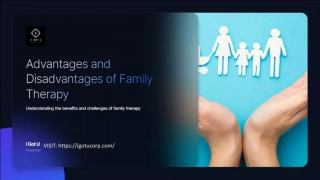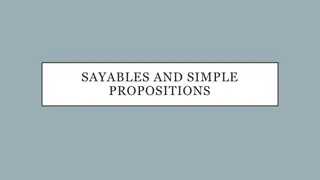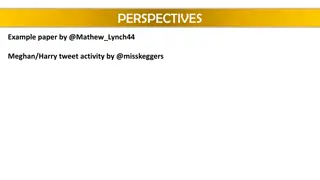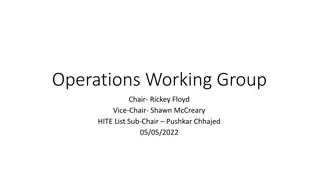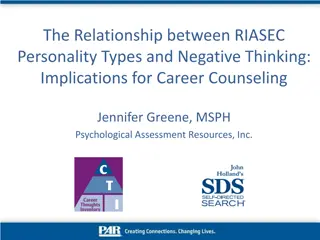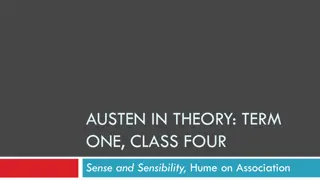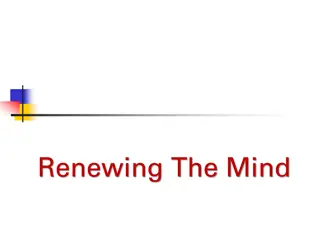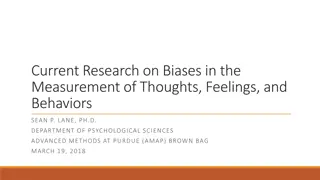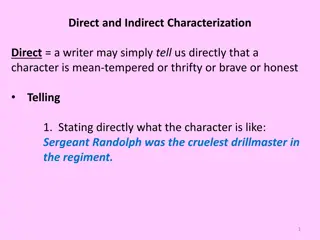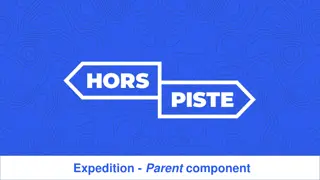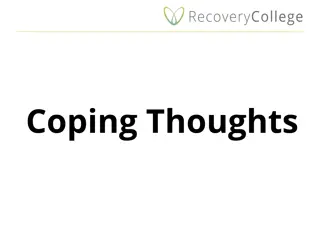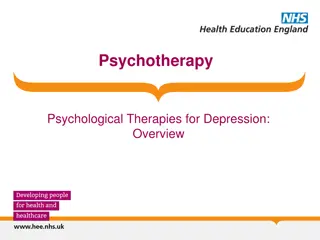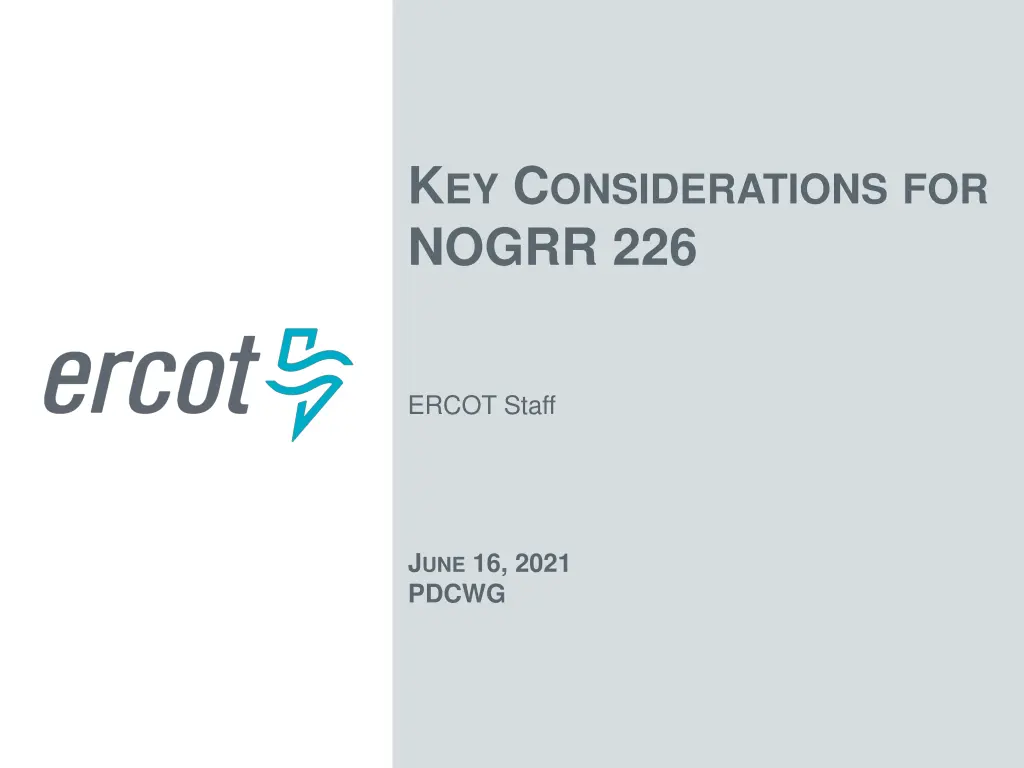
Key Considerations for NOGRR 226 ERCOT Staff Analysis
Explore the implications of NOGRR 226's proposal to raise the Transmission Operator Load shedding relay set point requirement, focusing on UFLS thresholds, frequency response obligations, and critical inertia levels in the ERCOT interconnection system.
Download Presentation

Please find below an Image/Link to download the presentation.
The content on the website is provided AS IS for your information and personal use only. It may not be sold, licensed, or shared on other websites without obtaining consent from the author. If you encounter any issues during the download, it is possible that the publisher has removed the file from their server.
You are allowed to download the files provided on this website for personal or commercial use, subject to the condition that they are used lawfully. All files are the property of their respective owners.
The content on the website is provided AS IS for your information and personal use only. It may not be sold, licensed, or shared on other websites without obtaining consent from the author.
E N D
Presentation Transcript
KEY CONSIDERATIONS FOR NOGRR 226 ERCOT Staff JUNE 16, 2021 PDCWG
Introduction NOGRR226 proposes to raise the first 5% Transmission Operator (TO) Load shedding relay set point requirement from 59.3 Hz to 59.4 Hz. NOGRR226 also indicates that when the frequency falls below 59.4 Hz, there is risk of damage to turbine blades and that in order to avoid this damage, a relay is triggered that will trip the generator Off-Line after nine minutes. UFLS settings are part of a interweaving of system operations and protection. Hence, there are several aspects that need to be considered holistically when assessing this proposal. The next slides will delve on some of these aspects and the potential impact of this change. 2 PUBLIC 2
Nodal Operating Guide (NOG) 2.6.1 Under Frequency Load Shed (UFLS) UFLS program is intended to arrest severe frequency declines and to facilitate the operation of the ERCOT interconnection as a single island during severe under-frequency events. Governed by NERC PRC-006-5 Standard. Per this standard ERCOT is requires to periodically assess whether the UFLS program is adequate through dynamic simulations. The simulation should demonstrate that the UFLS program can effectively arrest the frequency decline when the system is subjected to severe imbalances so that the frequency and voltage/frequency performance requirements can be satisfied. THRESHOLD LOAD RELIEF 59.3 Hz 5% of the ERCOT System Load (Total 5%) 58.9 Hz An additional 10% of the ERCOT System Load (Total 15%) 58.5 Hz An additional 10% of the ERCOT System Load (Total 25%) 3 PUBLIC 3
Nodal Operating Guide 2.6.2 Under Frequency Relays for Generators If under-frequency relays are installed and activated to trip the unit, these relays shall be set such that the automatic removal of individual Generation Resources from the ERCOT System meets the following requirements: FREQUENCY RANGE DELAYTO TRIP No automatic tripping (Continuous operation) Above 59.4 Hz Above 58.4 Hz up to And including 59.4 Hz Above 58.0 Hz up to And including 58.4 Hz Above 57.5 Hz up to And including 58.0 Hz 57.5 Hz or below Not less than 9 minutes Not less than 30 seconds Not less than 2 seconds No time delay required Aligned with NERC PRC-024-2 Standard. 4 PUBLIC 4
Ancillary Services and Critical Inertia RRS studies are designed to meet criteria set forth in NERC standard BAL-003-2, Interconnection Frequency Response Obligation. Per this standard ERCOT must plan to operate such that the loss of 2805 MW does not trigger UFLS (at 59.3 Hz). ERCOT s RRS studies are designed with a 0.1 Hz margin i.e. for loss of 2805 MW of generation these studies identify the amount of primary frequency response needed such that the lowest frequency stays at or above 59.4 Hz. NERC s BAL-003-2 also establishes a Frequency Response Obligation (FRO) and measures ERCOT s performance in meeting this obligation. UFLS trigger frequency is part of the calculations used for establishing FRO. Lastly, ERCOT establishes a Critical Inertia level based on studies that determine the minimum level of system inertia that is necessary to ensure ERCOT s fast frequency responsive resources can be effectively deployed before frequency drops below 59.3 Hz following the simultaneous loss of 2805 MW. The proposal will impact RRS quantities, FRO and Critical Inertia. 5 PUBLIC 5
Past Events ERCOT has had two instances since 2000 wherein frequency has dropped below 59.4 Hz May 15, 2003: Two Comanche Peak unit tripped causing frequency to drop to 59.29 Hz and triggered first stage of UFLS; Frequency was below 59.4 Hz for a few seconds. Feb 15, 2021: A slow frequency event caused by steady loss of generation caused frequency to drop to 59.303 Hz and caused 276.24 MW of Load on UFLS to trip; Frequency was below 59.4 Hz for 4 minutes 24 seconds. 6 PUBLIC 6
Feb 15, 2021 EEA Event Generator Outages due to Equipment Issues Four units (two Coal and two Natural Gas) derated or tripped offline due to equipment issues caused by the changes in frequency between 1:30 am and 2:45 am on Feb 15, 2021. Below are some anecdotes from the cause information shared with ERCOT. Cause of the trip was a high exhaust back pressure trip on the unit, owing to an unexpected low frequency response owing to extreme cold weather. When frequency increased rapidly to 60.2 Hz, the unit rapidly decreased output however the inertia that remained in the machine from the rapid ramp created too much steam in the boiler resulting in the safety valves lifting; ultimately tripping (the unit) offline due to low differential pressure in the boiler water circulating pumps. After unit was stabilized from throttle pressure impulse line freezing, significant system frequency event caused boiler upset and subsequent trip. Most resources were able to ride through low frequency. Regardless of where the UFLS setpoints reside, units should be tuned to be able to ride through frequency disturbances prior to the time periods identified in the generator protection requirements (i.e. NOG Section 2.6.2). 7 PUBLIC 7
Moving Forward The solution that has been proposed in NOGRR226 has broad reaching implications across TSP/DSP operations, Generation operations and Ancillary Services. ERCOT recommends that process of assessing this proposal begin at understanding the underlying issue that this NOGRR is attempting to solve. ERCOT further recommends that the stakeholders consider using following approach when responding to this NOGRR. 1. Understand the underlying issue (PDCWG) 2. Document the issue (PDCWG) 3. Determine optimal UFLS set points (PDCWG, DWG, OWG) 4. Determine adjustments needed to meet the optimal UFLS set points (PDCWG, DWG, OWG) 5. Draft rule changes for ERCOT Protocols, Operating Guides, and NERC Standards. 8 PUBLIC 8
Understanding the issue Confirm at what frequency levels and times do the collective set of resources experience damage (possibly due to temperature and pressure variations or potentially harmonics causing vibration issues at lower speeds or lower system frequencies) or operational concerns. Knowing this information will help in understanding the impact and the likelihood of failure occurring for all types and sizes of resources for both high and low frequency. Any supporting/technical documentation that can be shared with ERCOT on this topic will be helpful. Does system inertia levels have a material impact on the amount of stress imposed on spinning machines? Are generator protection relays set artificially at the table of NOG Section 2.6.2 or are they set at the points where damage begins to occur. How many generator protection relays are set to trip off prior to NOG Section 2.6.2? Do the relay timings get adjusted after damage accumulation occurs? Does the damage accumulation reset after a turbine blade overhaul? 9 PUBLIC 9

